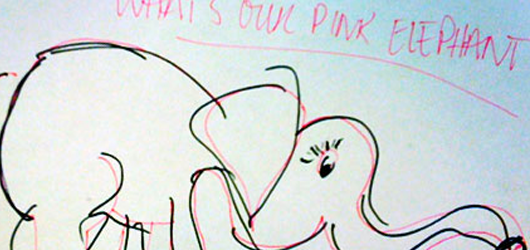
As the Internet and technology because more tightly woven into the fabric of people’s everyday lives, a false sense of knowledge rises. This is a rising challenge for the user experience designer – trying to balance input from vaguely informed stakeholders who passionately believe they know what’s right, just because they use the medium.
Seasoned user experience designers know that education is a large portion of your job and deliverables. You continually find yourself explaining “why” things are the way they are. But today, the element of education as a part of the user experience design’s job is more present than ever. The reason is that we have a breed of people who use the Internet who feel as though they know best. Therefore, they are armed with feedback and input – we’ve all heard it …. “but that’s how they do it on Facebook”, “it can’t be that hard”, “what do you mean it will take a week”. It is exactly these types of conversations that distract from the true value of a product and many times, simply destroy it.
There’s a misconception about what user experience design truly is. It’s time that we as user experience designers, work harder at communicating and advocating for our true value.
User experience design is far more than wireframes, feature lists, and creative sketches on a whiteboard. It’s more than conducting an engaging IDEO-style brainstorm session and leaving our perch to spend a day at Wal-Mart doing ethnographic research. What people don’t understand, is that the biggest part of user experience is what you don’t see. It’s the process that happens to get to those deliverables. It’s the hours of critical thinking and problem solving. It’s the hundreds of being wrong before you finally hit the right. It’s the complex game of Jenga as you try to put all the pieces of the puzzle together – without breaking it.
I recently read Reframing UX: It’s About Designing Products, an article by Josh Korr, web product manager at Viget labs. I think Josh touches on one of the factors that contributes to the misconception about what we do.
It’s incredible to watch Laura or KV listen to a client’s ideas, to user interviews, to internal brainstorms — and then, often in real-time, filter and mentally transmogrify all of that into coherent, awesome, well-defined features and products.
That mental transmogrification has the same surreal alchemical quality that I see when our designers conjure up incredible mood boards and design comps out of little more than a client’s free-associative, often ill-defined, feelings. It’s pure creativity in action.
Josh realizes that the best user experience designers have this unique ability to rapidly take in, process, piece together, and turn ideas and information into tangible product experiences. They do this so fast and almost effortlessly, that to others, it perhaps gives an impression of “I can do that too”. But the reality is that user experience designers have trained their minds to do this and it’s a result of years of learning, thinking, being wrong, and sometimes being right.
I don’t have any brilliant ideas on how to solve this problem yet. I wish I did. The only advice I have is that we have to get more comfortable with letting people be a part of the process. If we want people to understand not just the deliverables, but the journey we had to go on to reach that destination, then we need to allow them ride along.